vinyl flooring installers
Fill in your details below - we'll reach out to schedule a free quote!
We will get back to you as soon as possible
Please try again later
What is Vinyl Flooring?
Vinyl flooring is a synthetic material made from polyvinyl chloride (PVC).
It was first introduced in the 1920s as an alternative to linoleum, and it has since become one of the most popular types of flooring on the market.
One of the main advantages of vinyl flooring is that it is highly durable and easy to maintain.
It's also waterproof, making it an ideal choice for rooms that are prone to moisture, such as bathrooms and kitchens.
In addition, vinyl flooring is available in a wide range of colors and patterns, making it easy to find a style that suits your taste.

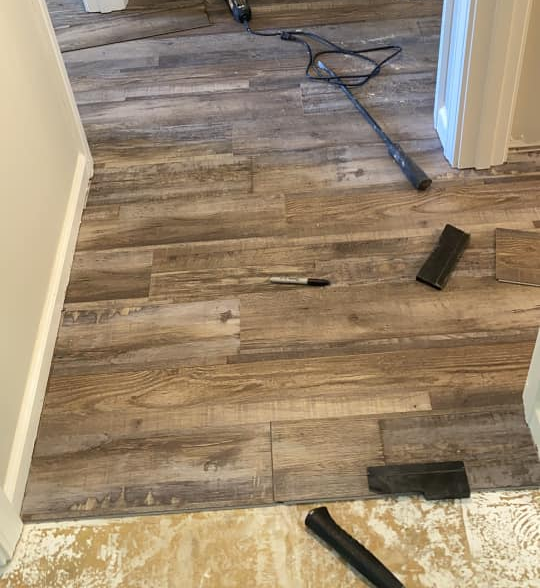
Types of Vinyl Flooring
When choosing vinyl flooring for your home, you have a few different options to choose from.
- Vinyl sheet is a single piece of vinyl that is cut to fit your floor.
- VCT, or vinyl composite tile, is made up of multiple tiles that are arranged in a pattern.
- LVP, or luxury vinyl plank, is a solid piece of vinyl that looks like wood or stone.
- LVT, or luxury vinyl tile, is a similar but superior product to VCT.
Each type of vinyl has its own advantages and disadvantages, so it's important to choose the one that best suits your needs.
Vinyl Sheet
Vinyl sheet flooring is a type of flooring that consists of a single continuous sheet of vinyl.
Unlike other types of vinyl flooring, such as tile or plank, vinyl sheet flooring is not cut into individual pieces. Instead, it is simply laid down in one large sheet.
Vinyl sheet flooring is available in a wide range of colors and patterns, making it a popular choice for many homeowners. However, there are also some potential drawbacks to consider.
One downside of vinyl sheet flooring is that it can be damaged more easily than other types of flooring. For instance, if a heavy object is dropped on vinyl sheet flooring, it is more likely to dent or crack than tile or wood.
In addition, vinyl sheet flooring can be difficult to repair if it becomes damaged. Another potential drawback is that vinyl sheet flooring can be less comfortable than other types of flooring, such as carpet. This is because vinyl does not have the same cushioning effect as carpet.
As a result, vinyl sheet flooring may not be the best choice for rooms where you will be spending a lot of time standing or walking, such as in a kitchen.
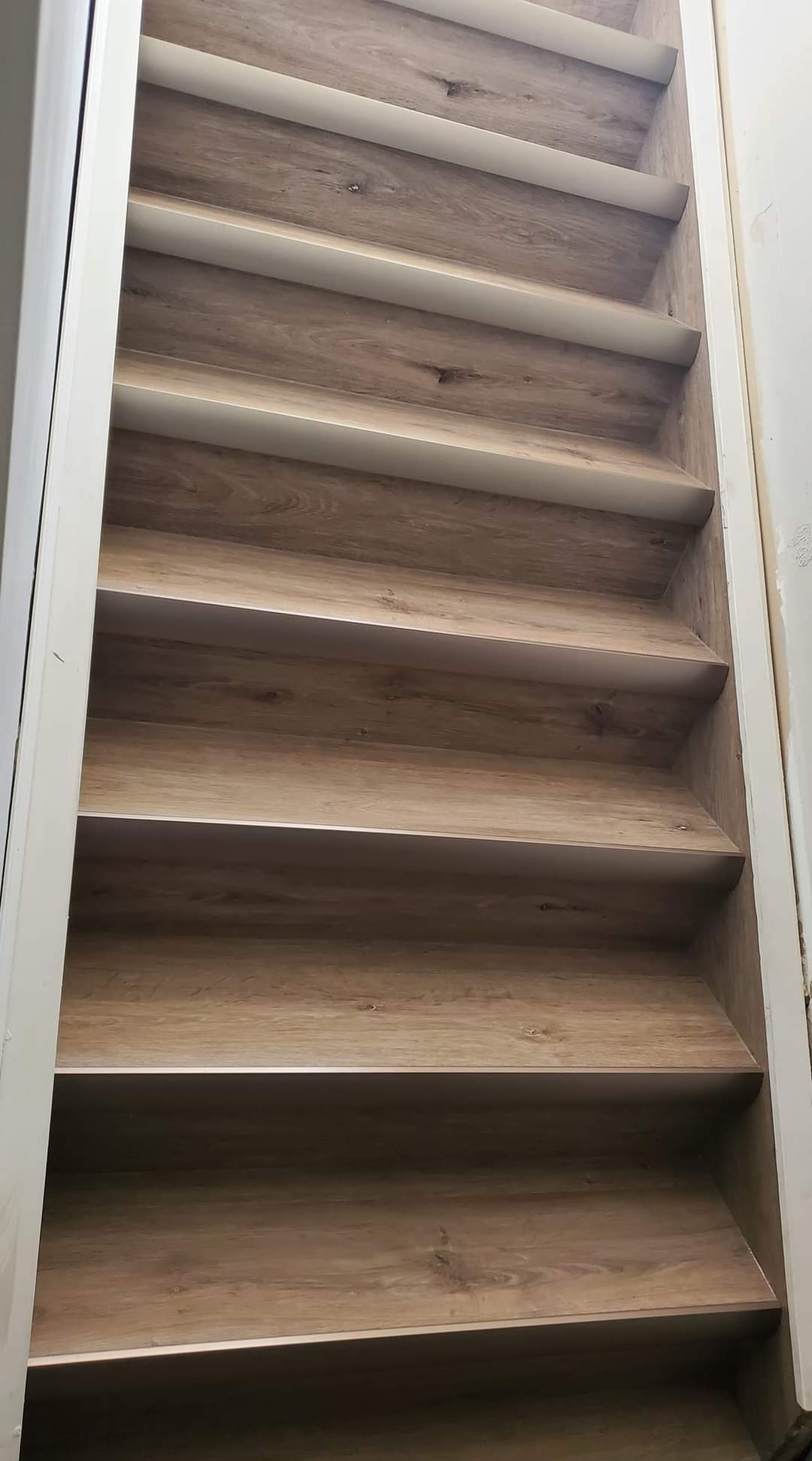
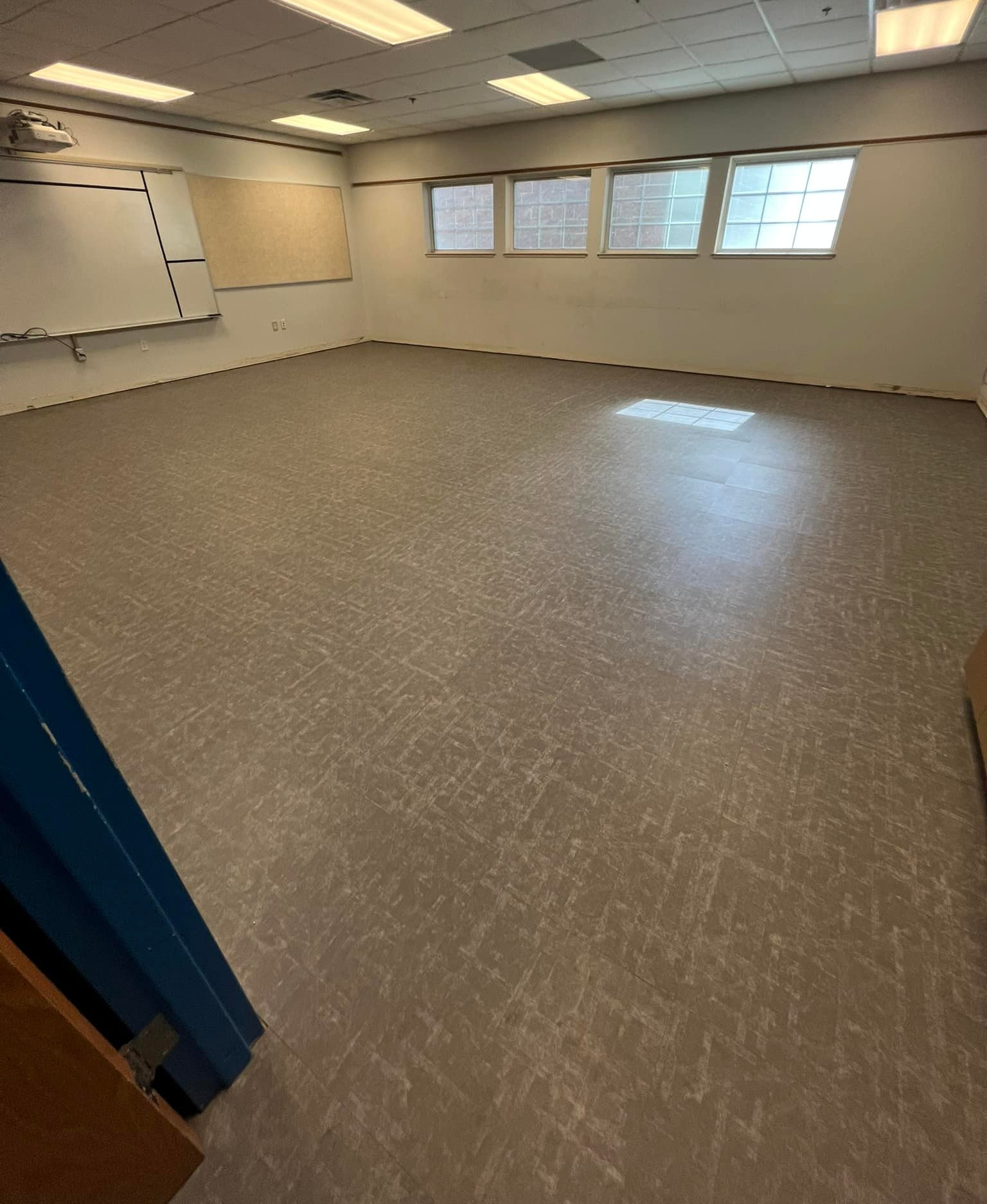
Vinyl Composite Tile (VCT)
Vinyl composite tile, or VCT, is a popular choice for flooring in both residential and commercial settings.
It is durable and easy to maintain, and it comes in a wide variety of colors and styles.
However, VCT does have some drawbacks. It can be susceptible to scratching and staining, and it requires regular sealing and waxing to keep it looking its best.
In addition, VCT is not as cushioned as other types of flooring, so it may not be the best option for areas where comfort is a priority.
Overall, VCT is a versatile and attractive flooring choice that can suit a variety of needs.
Luxury Vinyl Plank (LVP)
Luxury vinyl plank (LVP) is a type of flooring that combines the best features of luxury vinyl tile (LVT) and laminate flooring.
LVP is made up of multiple layers, including a wear layer, an image layer, and a backing layer.
The wear layer is designed to resist scratches, scuffs, and stains, while the image layer provides the realistic look of wood or stone.
The backing layer provides stability and helps to reduce noise. One of the main benefits of LVP is that it can be installed over most existing floors, including concrete, wood, and vinyl.
LVP is also waterproof and highly durable, making it ideal for high-traffic areas. However, one drawback of LVP is that it can be challenging to repair if it becomes damaged.
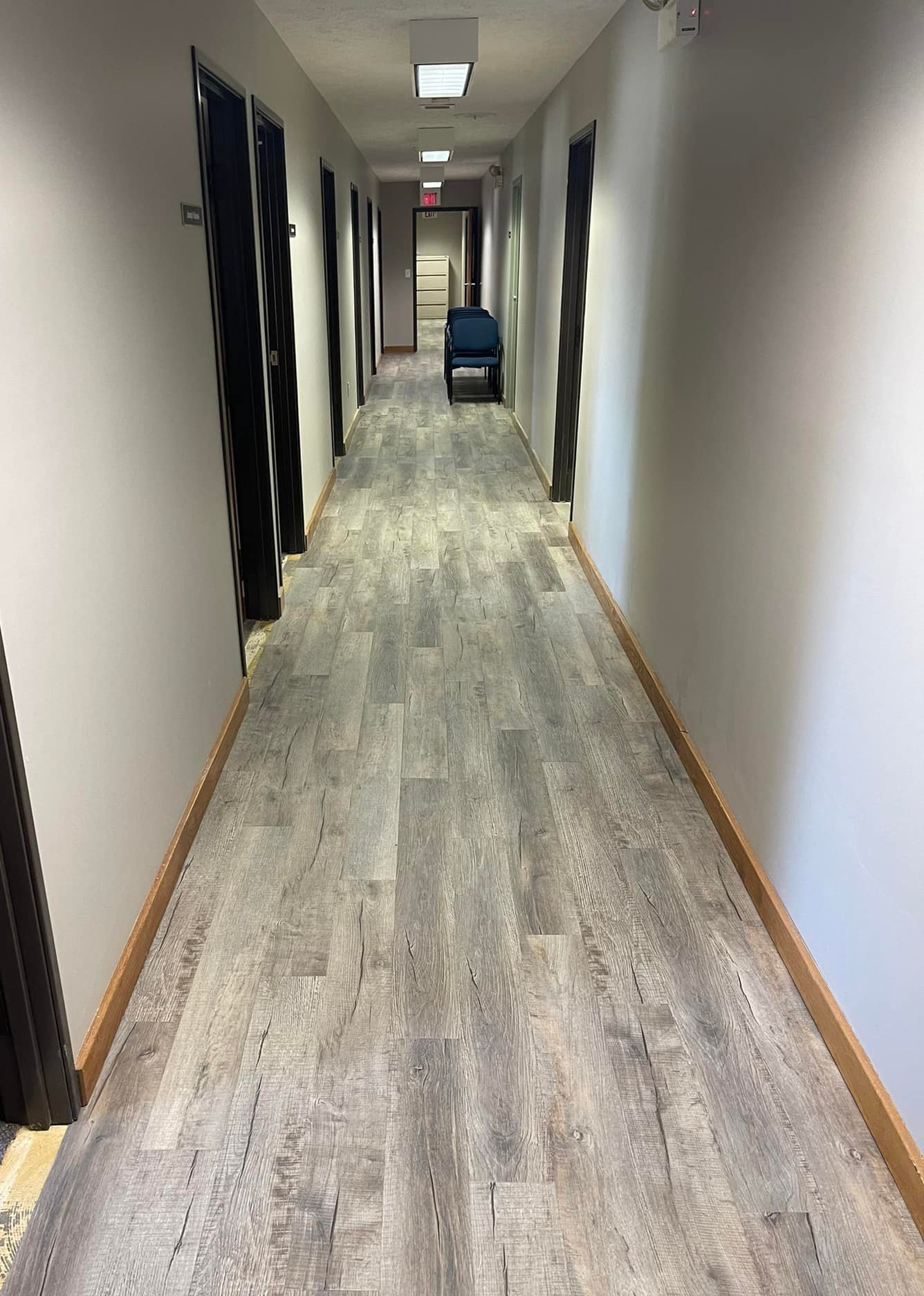

Luxury Vinyl Tile (LVT)
Luxury Vinyl Tile, or LVT, is a type of vinyl flooring that is designed to mimic the look of natural materials like stone or wood.
LVT is available in a variety of colors and patterns, and it can be installed in both homes and businesses.
One of the primary benefits of LVT is its durability; it is resistant to scratches, scuffs, and moisture, making it ideal for high-traffic areas.
Additionally, LVT is easy to clean and maintain, and it can be installed quickly and efficiently. However, there are some drawbacks to consider as well.
Luxury Vinyl Tile can be more expensive than other types of flooring, and it may require professional installation.
Additionally, LVT may not be as durable as some other materials, and it may show wear over time.
Benefits of Vinyl
When it comes to choosing a new floor, there are many things to consider. But if you're looking for a durable, affordable, and attractive option, then vinyl flooring might be the perfect choice for you.
Here are just some of the benefits that vinyl flooring has to offer:
- Vinyl flooring is very durable and can withstand a lot of traffic. It's also water-resistant, making it ideal for rooms like bathrooms and kitchens. And if you spill something on it, no need to worry - vinyl flooring is easy to clean and maintain.
- Vinyl flooring is also a very affordable option. It's typically much less expensive than other types of flooring, such as hardwood or tile. And since it's so durable, it will last for many years, so you won't have to replace it anytime soon.
- In addition to being durable and affordable, vinyl flooring is also very attractive. It comes in a variety of colors and patterns, so you're sure to find an option that goes with your home's decor.
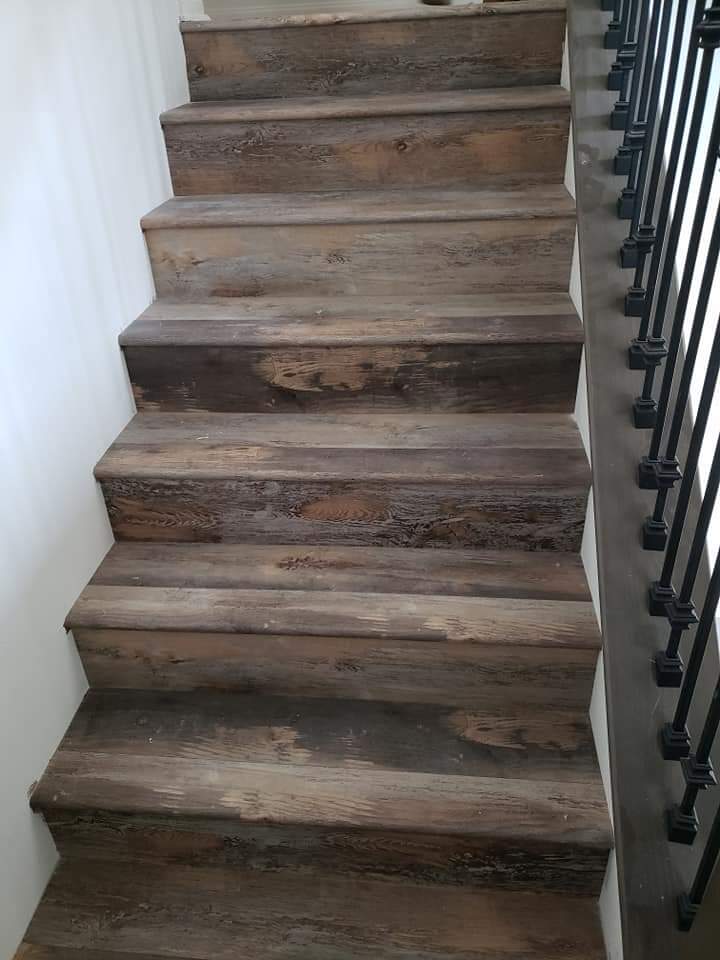
Vinyl Flooring Installation Process
Vinyl flooring installation may seem simple, but there are some complicated steps we go through in order to do the job properly and professionally.
Here, we'll give you an overview of the process that you'll go through with our floor installation contractors.
Choose Your Flooring
When it comes to installing vinyl flooring, the first step is choosing your flooring.
This is important to do first, because the choice in floor will dictate the rest of the process.
For example, if you choose a high-quality, thick vinyl flooring, you won't need to worry as much about underlayment or subfloor preparation.
On the other hand, if you choose a thinner, lower-quality vinyl flooring, you'll need to take extra steps to ensure that your flooring lasts for a long time.
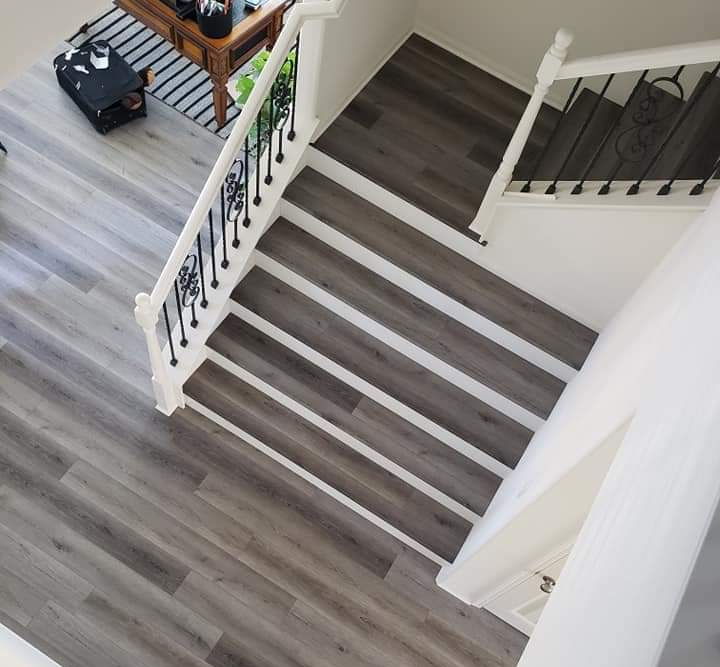
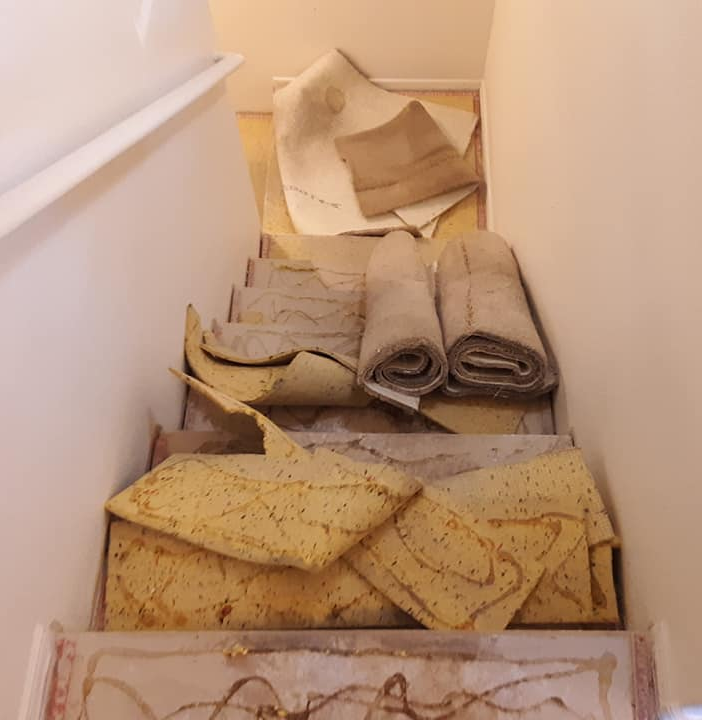
Remove Old Flooring
The second step in installing vinyl flooring is removing any old flooring.
This step is not always necessary because some types of vinyl can be installed over existing flooring.
However, if the old flooring is in poor condition, it is best to remove it before installing the new vinyl.
In addition, if the old flooring is not level, the new vinyl may not lie flat.
Once the old flooring has been removed, we sweep the subfloor clean and check for any nails or other debris that could damage the new vinyl.
Measurement
The third step in installing vinyl flooring is taking accurate measurements of the space.
This is a crucial step because the vinyl needs to fit snugly in order to prevent gaps and wrinkles.
In addition, taking accurate measurements will ensure that you don't end up with too much or too little vinyl.
To measure the space, we start by measuring the length and width of the room.
Then, we determine the size of each individual tile or plank.
Once our flooring contractors have these measurements, we can calculate the total amount of vinyl needed for the project.
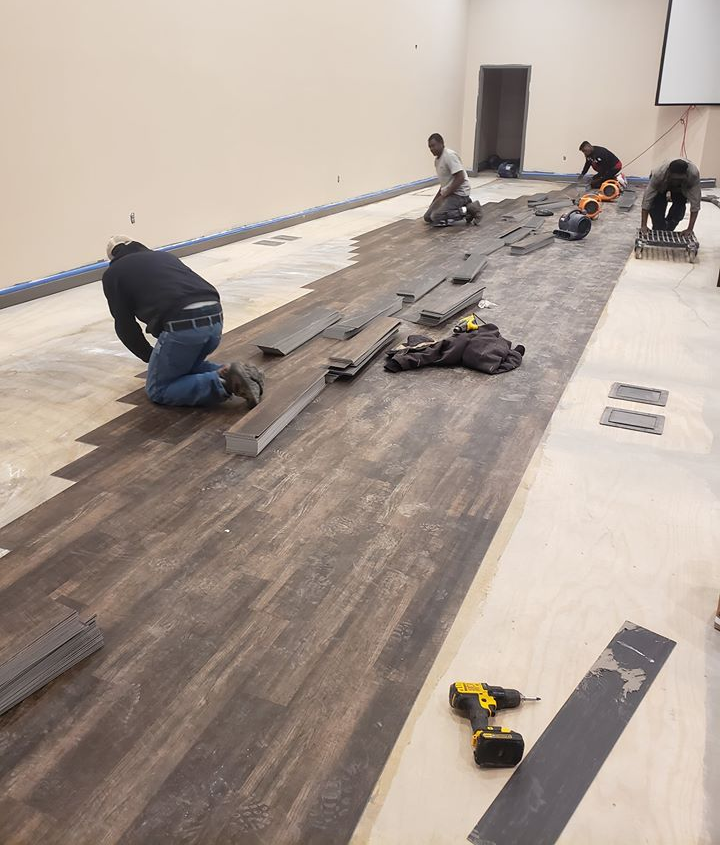
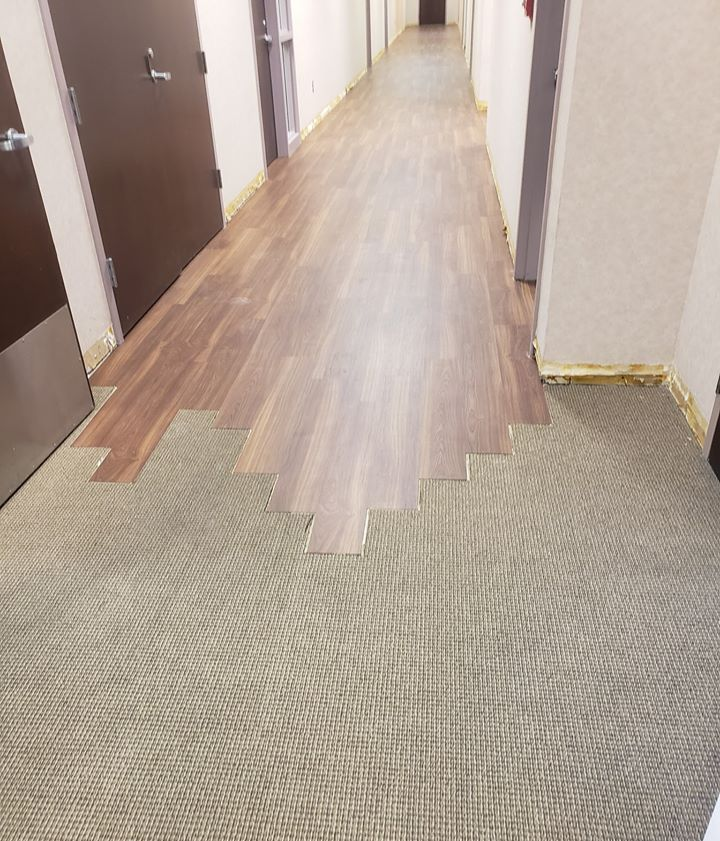
Subfloor
The fourth step in installing vinyl flooring is preparing the subfloor.
This can be done in a number of ways, including laying down plywood or installing a vapor barrier.
The type of subfloor preparation will depend on the type of vinyl you've chosen as well as the condition of the existing subfloor.
If the subfloor is in good condition, we may simply lay down a layer of plywood to provide a smooth, level surface for the vinyl.
However, if the subfloor is in poor condition, we may need to take other measures to ensure that the vinyl lies flat and lasts for a long time.
Underlayment
The fifth step in installing vinyl flooring is installing an underlayment, although some types of vinyl flooring don't need it.
An underlayment provides a buffer between the vinyl and the subfloor.
It also helps to reduce noise and makes the floor more comfortable to walk on.
The type of underlayment you'll need will depend on the type of vinyl flooring you've chosen.
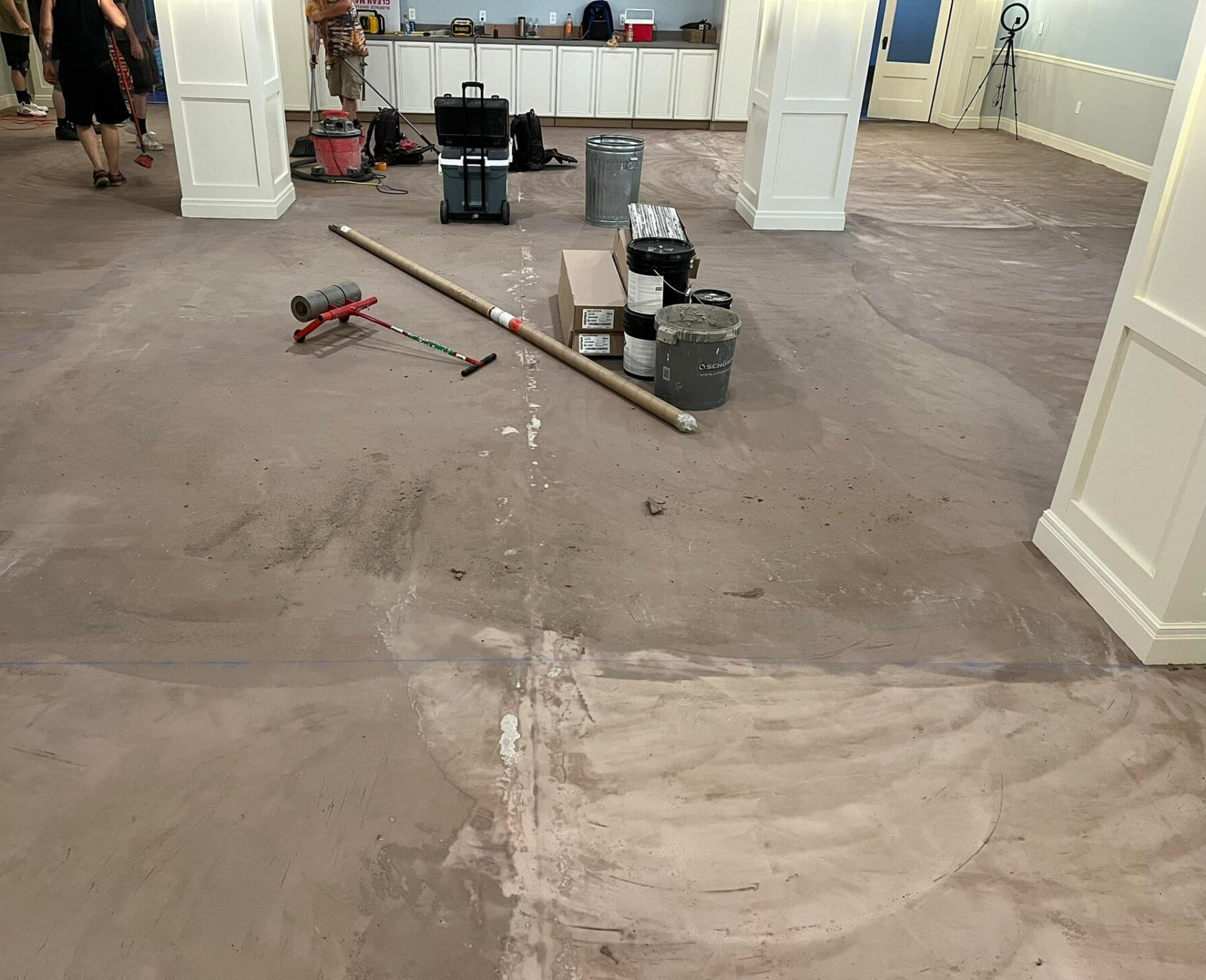
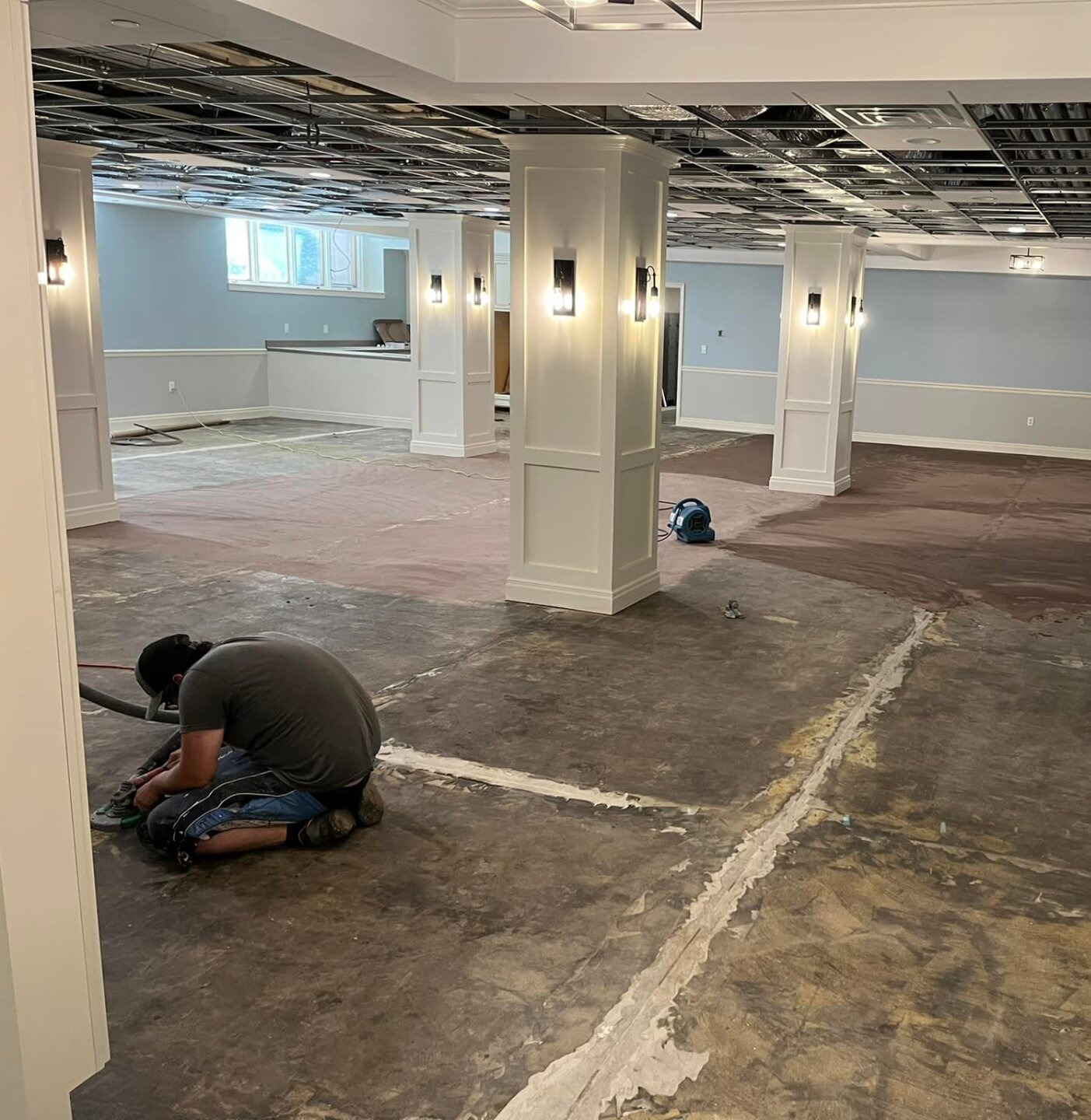
Vinyl Flooring Installation
The sixth step in this process is the installation of the vinyl floors themselves.
This step will vary depending on whether you have chosen vinyl sheet, LVP, VCT or CVT.
Regardless, our flooring contractors will carefully follow the manufacturer's instructions to ensure that the vinyl flooring is installed correctly.
This will ensure that your flooring looks great and lasts for many years.
It's also important so that the warranty remains valid.
Finishing
The final step of the vinyl flooring installation process is applying the finishing touches.
This includes trimming the vinyl around the edges of the room and sealing the seams.
Sealing the seams is important because it prevents water from seeping underneath the vinyl and damaging the subfloor.
Handling any moulding or thresholds is part of this final step, as well.
These final touches will ensure that your vinyl flooring looks great and lasts for many years.
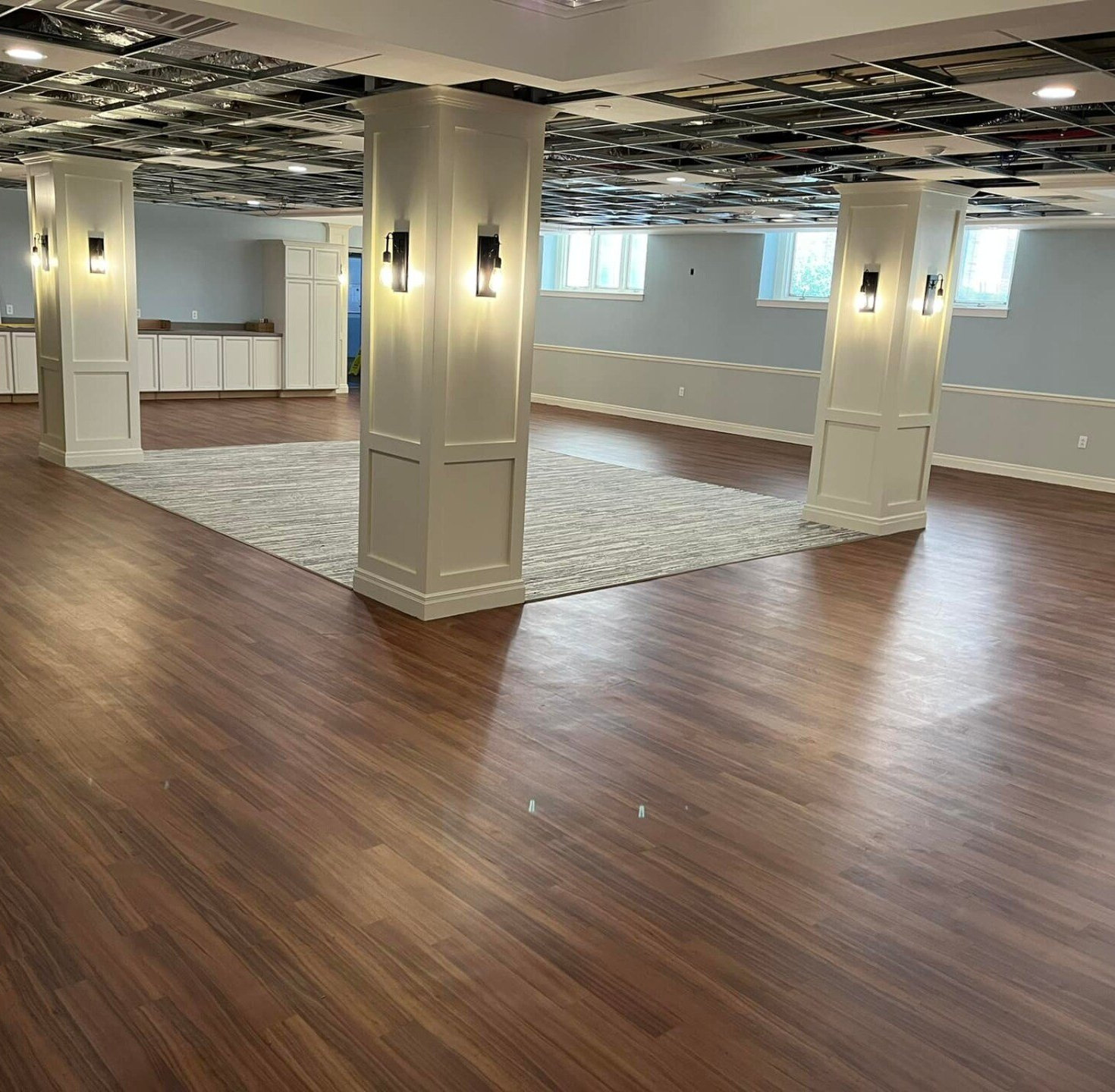
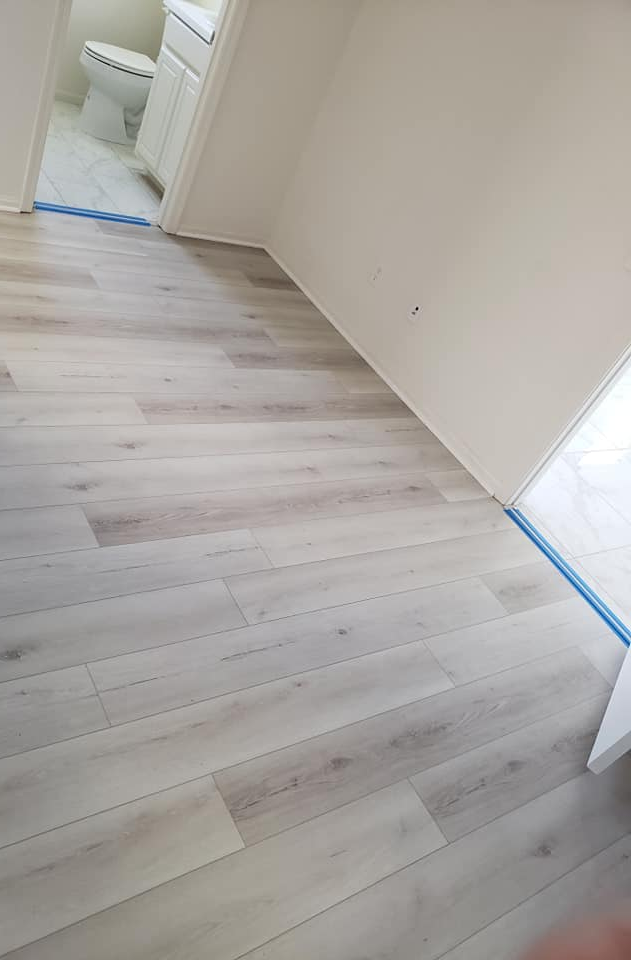
How to Maintain Vinyl Floors
To keep your vinyl floors looking their best, it is important to regularly sweep and mop them. In addition, you should avoid using harsh cleaning products, as these can damage the flooring.
Vinyl floors are a popular choice for many homeowners because they are attractive and durable. However, vinyl floors can be damaged by dirt, scratches, and spills if they are not properly maintained.
Here are some tips on how to keep your vinyl floors looking their best:
- Sweep or vacuum your floors regularly to remove dirt and debris.
- Wipe up spills immediately with a damp cloth.
- Place mats or rugs at all entrances to your home to help reduce the amount of dirt tracking onto your vinyl floors.
- Use furniture pads underneath chairs and tables to prevent scratching.
By following these simple tips, you can keep your vinyl floors looking like new for years to come.
How Much Does it Cost to Install Vinyl Flooring?
There are a few different factors that can affect the cost of installing vinyl flooring.
The first is the size of the room. A larger room will obviously require more material and more labor, which will drive up the price.
The next factor is the type of vinyl flooring you choose. There are many different options available on the market, and they can vary widely in price. The most expensive options tend to be made of higher-quality materials and have better durability. However, even the most basic vinyl flooring can provide a good level of protection against wear and tear.
The third factor is the installation itself. When you hire a professional to install your vinyl flooring, you can expect to pay more than if you do it yourself. However, professional installation can help to ensure that the job is done correctly and that your vinyl flooring will last for many years.
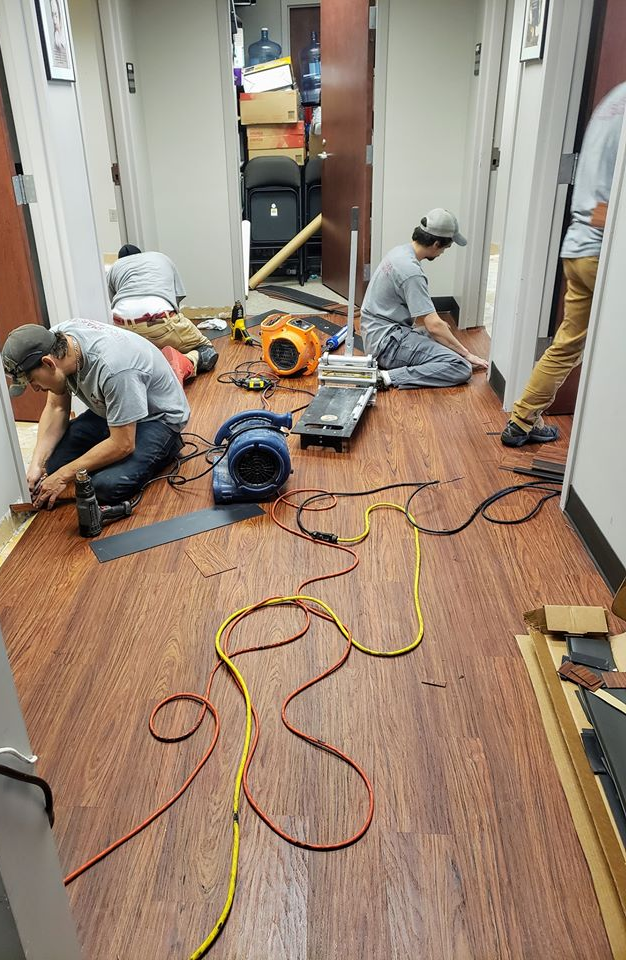
Vinyl Flooring Installation FAQs
What are the disadvantages of vinyl flooring?
Yes, there are some disadvantages to vinyl flooring that you should be aware of.
For example, vinyl flooring can be damaged by sharp objects and high heels, and it can discolor when exposed to sunlight. In addition, vinyl flooring is not always as durable as other materials such as wood or tile, and it may require more frequent replacement.
Choose a long-lasting and high quality product in order to avoid most of these common issues.
How long do vinyl floors last?
It depends on a number of factors, including the quality of the product, the amount of traffic, and how well it is maintained.
Generally speaking, however, vinyl floors can last anywhere from 10 to 20 years. This makes them a popular choice for both residential and commercial settings.
When properly cared for, vinyl floors are durable and easy to clean, making them ideal for high-traffic areas.
What does a vinyl flooring fitting service include?
A vinyl flooring fitting service typically includes a few key steps:
- First, the existing flooring is removed and disposed of.
- Next, the subfloor is prepared by leveling and cleaning it.
- Once the subfloor is ready, the vinyl flooring can be installed.
- The final step is to seal the edges of the vinyl and add any trim or molding that may be required.
In most cases, the entire process can be completed in a single day. However, depending on the size and complexity of the job, it may be necessary to schedule multiple visits.
Either way, a professional vinyl flooring fitting service will ensure that your new floor looks great and lasts for years to come.
What's meant by the terms LVT and LVP?
LVT and LVP stand for luxury vinyl tile and luxury vinyl plank, respectively. These are types of flooring that are made to look like stone or wood, but are more durable and easier to maintain.
LVT and LVP are often used in high-traffic areas because they can withstand a lot of wear and tear. They are also water-resistant, making them ideal for bathrooms and kitchens.
In addition, LVT and LVP are easy to clean and come in a variety of colors and styles. As a result, they're becoming increasingly popular choices for home flooring.
Reach Out For a Free Quote
Send us a message using the form below, and we’ll get back to you as soon as we can.
We will get back to you as soon as possible
Please try again later
Copyright © 2015-2022 JD Flooring Installers | All rights reserved
Contractor Website by Curated Leads
